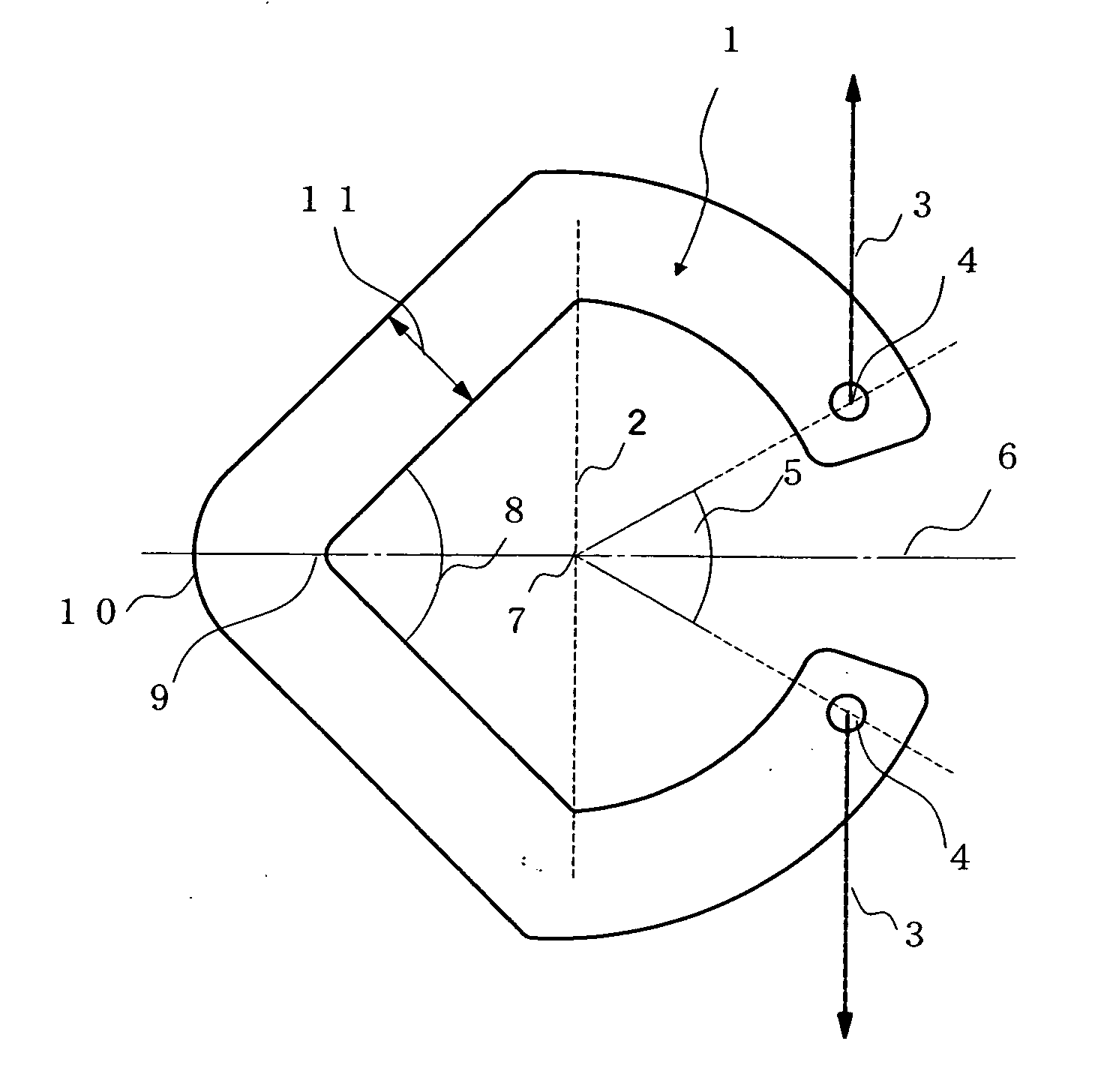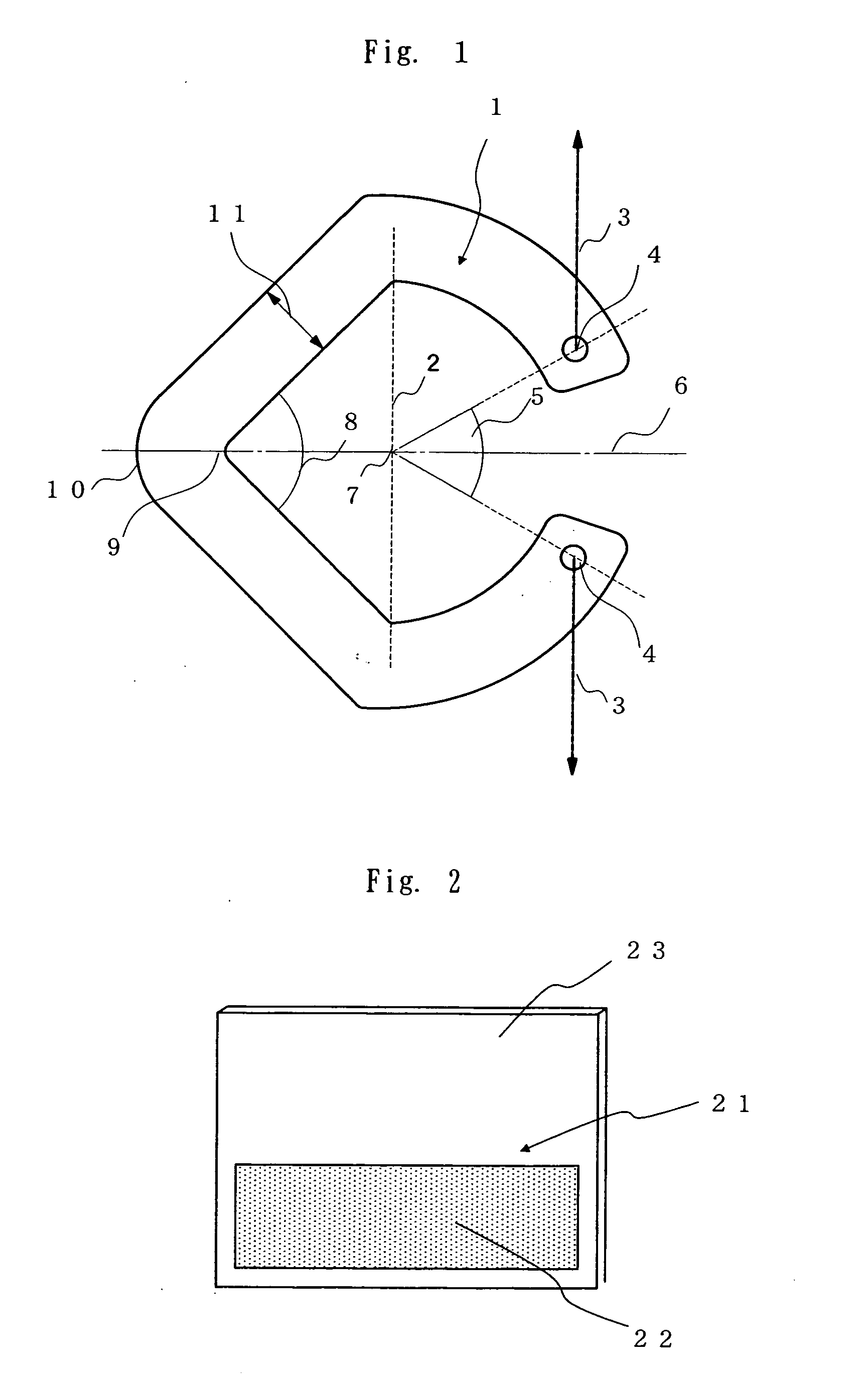Aromatic Polycarbonate Resin Composition and Manufacturing Process Thereof
a technology of aromatic polycarbonate and resin, which is applied in the field of aromatic polycarbonate resin composition, can solve the problems of commercially available fluorine-containing organic metal salt compounds that cannot be clearly distinguished, and achieve the effects of improving flame retardancy, hardly melting drips, and excellent flame retardancy
- Summary
- Abstract
- Description
- Claims
- Application Information
AI Technical Summary
Benefits of technology
Problems solved by technology
Method used
Image
Examples
examples
[0197] The following examples are provided for the purpose of further illustrating the present invention but are in no way to be taken as limiting. In the following examples, the raw materials shown in Tables 1 to 13 are given below.
(Component A)
PC-1: linear aromatic polycarbonate resin powder having a viscosity average molecular weight of 22,500 (Panlite L-1225WP of Teijin Chemicals Ltd.)
PC-2: linear aromatic polycarbonate resin powder having a viscosity average molecular weight of 16,000 (CM-1000 of Teijin Chemicals Ltd.)
PC-3: branched aromatic polycarbonate resin (Taflon IB2500 of Idemitsu Petrochemical Co., Ltd.)
PC-4: linear aromatic polycarbonate resin having a viscosity average molecular weight of 121,500 manufactured from bisphenol A, p-tert-butylphenol as a terminal capping agent and phosgene in the presence of an amine-based catalyst
PC-5: linear aromatic polycarbonate resin powder having a viscosity average molecular weight of 30,000 (Panlite K-1300WP of Teijin ...
examples 19 to 31
, Comparative Examples 10 to 13 and Reference Example 1
(IV-1) Evaluation Items
(IV-1-i) Flame Retardancy
[0226] The evaluation of flame retardancy was made on test samples having a thickness specified in Tables 8 and 9 in the same manner as in (I-1-i). The test samples were manufactured by injection molding at a molding cycle of 2 minutes. In Examples and Comparative Examples, flame retardancy ratings are shown, and even a sample which experienced dripping yielded a V-2 result.
(IV-1-ii) Fatigue Characteristics
[0227] The number of cycles to fracture was counted in a fatigue test by using so-called “C-shaped” test samples shown in FIG. 1 (rupture is a state where a sample cannot bear a test load and does not means that the test sample is broken into two). The average value of 3 test samples is taken as the number of cycles to fracture excluding a case where the number of cycles to fracture exceeds 100,000. The test was carried out at a temperature of 30° C., a relative humidity o...
example 41
[0247] A light reflector for an LED array type backlight having a bottomed lattice-like shape was molded out of the polycarbonate resin composition of Example 38 to manufacture a liquid crystal display. A silver streak was observed in a light reflector molded out of the resin composition of Comparative Example 16 and charging became unsatisfactory at a resin temperature without a silver streak, thereby making it impossible to obtain a satisfactory molded product.
PUM
| Property | Measurement | Unit |
|---|---|---|
| thickness | aaaaa | aaaaa |
| Ra | aaaaa | aaaaa |
| thickness | aaaaa | aaaaa |
Abstract
Description
Claims
Application Information
 Login to View More
Login to View More - R&D
- Intellectual Property
- Life Sciences
- Materials
- Tech Scout
- Unparalleled Data Quality
- Higher Quality Content
- 60% Fewer Hallucinations
Browse by: Latest US Patents, China's latest patents, Technical Efficacy Thesaurus, Application Domain, Technology Topic, Popular Technical Reports.
© 2025 PatSnap. All rights reserved.Legal|Privacy policy|Modern Slavery Act Transparency Statement|Sitemap|About US| Contact US: help@patsnap.com



